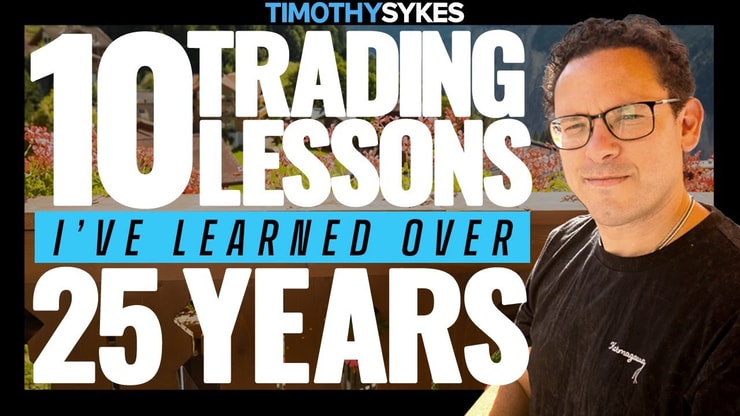MACD crossovers are a cornerstone in technical analysis, providing clarity and guidance through the volatility of trading markets. These indicators help traders predict price movements by signaling potential bullish or bearish conditions. Understanding when and why these crossovers occur allows traders to make informed decisions, enhancing both their strategic planning and execution.
For traders, MACD crossovers simplify the analysis of complex price actions and offer several advantages. They validate trend reversals, which can help secure entry and exit points at the most opportune times, optimizing profit and reducing risk. The ease of interpretation and timely signals make MACD an essential tool for traders aiming to leverage market momentum effectively.
I’ll answer the following questions:
- What is a MACD crossover?
- How are MACD crossovers formed?
- Why do MACD crossovers matter in market analysis?
- How do MACD crossovers signal entry and exit points in trading?
- What are practical tips for using MACD crossovers?
- Which technical indicators complement MACD crossovers well?
- How do different market conditions affect MACD crossover signals?
- What are common mistakes to avoid with MACD crossovers?
Let’s get to the content!
Table of Contents
- 1 What Is a MACD Crossover?
- 2 How Do MACD Crossovers Signal Entry and Exit Points in Trading?
- 3 Practical Tips for Using MACD Crossovers
- 4 Combining MACD Crossovers with Other Technical Indicators
- 5 MACD Crossovers in Different Market Conditions
- 6 How Do Market Conditions Affect MACD Crossover Signals
- 7 Common Mistakes to Avoid with MACD Crossovers
- 8 How to Avoid False Signals from MACD Crossovers
- 9 Key Takeaways
- 10 Frequently Asked Questions
- 10.1 What is the Best Time Frame for MACD Crossovers?
- 10.2 How Frequently Should I Check MACD Crossover Signals?
- 10.3 How Reliable is MACD Crossover?
- 10.4 What Role Does Technical Analysis Play in ETF Trading?
- 10.5 How Can Traders Optimize Their Use of Price Charts and Site Navigation for Effective Trading?
What Is a MACD Crossover?

At its core, the MACD tracks the relationship between two moving averages of a stock’s price. A crossover occurs when the MACD line (the difference between two exponential moving averages) crosses above or below the signal line, an average of the MACD line itself. This crossover points to an acceleration in the direction of the price movement, providing a powerful buy or sell signal.
You’ll need a good trading platform to use this indicator…
When it comes to trading platforms, StocksToTrade is first on my list. It’s a powerful day and swing trading platform that integrates with most major brokers. I helped to design it, which means it has all the trading indicators, news sources, and stock screening capabilities that traders like me look for in a platform.
Grab your 14-day StocksToTrade trial today — it’s only $7!
Why Do MACD Crossovers Matter in Market Analysis?
MACD crossovers hold significant predictive value for identifying market trends. This capability to foresee changes in momentum makes them an invaluable tool for traders, who can thus anticipate market movements and adjust their strategies accordingly.
Key reasons for the popularity of MACD crossovers include:
- Accuracy: They effectively filter out random price fluctuations, highlighting significant trends.
- Versatility: Applicable in various trading environments, from stocks to forex.
- Proactivity: They provide early warnings about potential market shifts.
- User-friendliness: Their clear signals make them accessible to traders at all levels.
How Do MACD Crossovers Signal Entry and Exit Points in Trading?

Traders interpret MACD crossovers as signals to buy or sell. An upward crossover generates a buy signal, suggesting an emerging uptrend. Conversely, a downward crossover might signal a good time to sell as it indicates a potential downtrend.
Practical entry and exit points include:
- Buying when the MACD line crosses above the signal line at an upward trend’s beginning.
- Selling when the MACD line crosses below the signal line during the early stages of a downward trend.
Practical Tips for Using MACD Crossovers
Successfully integrating MACD crossovers into trading strategies requires understanding their strengths and limitations. Here are a few tips:
- Adjust sensitivity: Modify the EMA settings based on your analysis timeframe and trading style.
- Combine with other data: Use volume indicators to confirm MACD signals.
- Stay updated: Regularly reevaluate your settings to adapt to changing market conditions.
Being practical should extend to the platform you’re trading on. Today’s traders often rely on mobile platforms to execute trades quickly and efficiently. Incorporating MACD crossovers into mobile trading on platforms like iPhones can allow traders to make informed decisions on the go. Knowing how to set up and read MACD on mobile interfaces can enhance your trading flexibility and responsiveness. For tips on integrating this powerful tool into your mobile trading strategy, check out our guide on How to Buy Stocks on an iPhone.
Combining MACD Crossovers with Other Technical Indicators
Integrating MACD with other indicators enhances analytical accuracy. Effective combinations include using the Relative Strength Index (RSI) for confirming momentum or Bollinger Bands for assessing volatility. Together, these tools provide a fuller understanding of market dynamics, helping traders make more robust decisions.
Integrating MACD crossovers with the ADX and DMI indicators is another hot tactic. The ADX (Average Directional Index) measures the strength of a trend, while DMI (Directional Movement Index) details the direction of the trend. Together, they help confirm the MACD crossover signals, reducing false positives and offering a more comprehensive market analysis. For a detailed guide on how to use these indicators in conjunction, visit our comprehensive breakdown on ADX and DMI.
MACD Crossovers in Different Market Conditions

The effectiveness of MACD crossovers can vary across different market conditions. They tend to perform well in trending markets where clear directions are present but may generate false signals in range-bound markets.
Performance of MACD Crossovers in Trending vs. Sideways Markets
In strong trending markets, MACD crossovers are highly effective as they align with significant price moves. In contrast, in sideways markets, these indicators may lead to misinterpretations due to the lack of persistent direction.
More Breaking News
- Innodata Inc. Predicted to Soar: Analyzing Growth Prospects
- Is It Too Late to Buy Darden Restaurants Stock After Recent Price Movements?
- Tesla’s $2 Trillion Ambition: Dream or Reality?
Adapting the Use of MACD Crossovers According to Market Volatility
Market volatility can significantly impact the effectiveness of MACD signals. In highly volatile markets, it is advisable to adjust the MACD settings to wider spans to reduce the noise and false signals that frequent price swings can cause.
How Do Market Conditions Affect MACD Crossover Signals
Market conditions play a critical role in the effectiveness of MACD crossover signals. In volatile markets, for example, MACD crossovers can appear frequently and may suggest significant price movements due to the wider price swings. However, in more stable conditions, these signals might be less frequent but potentially more reliable. Traders must adjust their strategies to the current market environment to maintain the effectiveness of their trades.
From my teaching experience, I’ve seen many traders improve their strategic execution by learning to adapt the MACD parameters—such as the distance between EMAs—based on whether the market is showing a trend or moving sideways.
Common Mistakes to Avoid with MACD Crossovers
One frequent error in using MACD crossovers is not accounting for signal line crossovers in conjunction with overall price patterns and other technical indicators. Traders often misinterpret the crossover as a standalone signal without confirming it with additional analysis, leading to premature or incorrect trades.
Remember: KEEP IT SIMPLE!!!!
Over-Reliance on MACD Crossovers
Depending too heavily on MACD crossovers is a common pitfall among traders, particularly in the crypto and ETF markets where volatility can skew the reliability of any single indicator. While MACD is an excellent tool for identifying trend changes and potential highs, it should not be used in isolation.
My experience has shown that integrating MACD with other forms of technical analysis, such as examining signal lines for convergence or divergence, greatly enhances the strategic depth of trade decisions.
Ignoring the Broader Market Context
Neglecting the broader market context is another mistake traders frequently make. MACD crossovers provide valuable signals, but they are just one piece of the puzzle. Economic events, company news, and overall market trends can all influence securities’ prices.
For instance, a bullish crossover signal during a market-wide downtrend might be misleading. This is why I always link practical trading advice with a strong emphasis on situational awareness, teaching traders to look beyond the charts to the factors driving market movements.
Not Setting Appropriate Stop-Loss Orders
Failing to set appropriate stop-loss orders can lead to unnecessary losses, especially when a MACD crossover signal does not pan out as expected. Stop-loss orders protect traders from significant downturns by automatically selling the security at a preset price point.
In my trading courses, I use various examples to highlight how setting stop-loss orders at a reasonable distance from the entry point can safeguard trades from sudden market reversals. This practice is crucial in managing risk and preserving capital, foundational principles in any trading strategy.
How to Avoid False Signals from MACD Crossovers

To mitigate the risk of false signals, traders should:
- Use additional indicators: Validate MACD crossover signals with other technical analysis tools.
- Look for confirmation: Ensure price actions and market conditions align with the signals before executing trades.
- Analyze historical effectiveness: Review past performance of similar setups to understand potential outcomes.
Looking for confirmation is something you should always do when deciding whether to trade or not. The pinbar and hammer patterns both signal potential market reversals, which is critical in conjunction with MACD crossover points. Learning to differentiate these signals can drastically reduce false positives and improve the efficacy of entry and exit strategies. For an in-depth comparison and how to leverage these patterns in your trading, view our detailed article on Pinbar vs Hammer.
Key Takeaways
- MACD crossovers provide crucial signals that can help time trades effectively.
- They are most effective in conjunction with other indicators and detailed market analysis.
- Understanding market conditions is essential for adjusting MACD settings appropriately.
Trading isn’t rocket science. It’s a skill you build and work on like any other. Trading has changed my life, and I think this way of life should be open to more people…
I’ve built my Trading Challenge to pass on the things I had to learn for myself. It’s the kind of community that I wish I had when I was starting out.
We don’t accept everyone. If you’re up for the challenge — I want to hear from you.
Apply to the Trading Challenge here.
Trading is a battlefield. The more knowledge you have, the better prepared you’ll be.
Is the MACD part of your trading toolkit? Write “I’ll keep it simple Tim!” in the comments if you picked up on my trading philosophy!
Frequently Asked Questions
What is the Best Time Frame for MACD Crossovers?
The choice of time frame for observing MACD crossovers significantly affects their effectiveness. For short-term traders, using a smaller time frame like the 1-minute to 15-minute charts may provide more trading opportunities but can include more noise and false signals. Conversely, long-term traders might prefer daily to weekly charts for clearer, more reliable signals that align with sustained price movements. It’s crucial to match the time frame to your trading strategy to capture the most advantageous signals without becoming overwhelmed by market “noise.”
How Frequently Should I Check MACD Crossover Signals?
The frequency of monitoring MACD crossovers should align with your trading timeframe and the volatility of the market. Day traders might check signals several times throughout a trading day, while swing traders may find it sufficient to review MACD crossover data once a day or even less frequently, depending on market conditions and the specifics of their trading strategy. Regularly updating yourself with MACD signals helps maintain a pulse on potential market moves, ensuring that you don’t miss critical entry or exit points.
How Reliable is MACD Crossover?
MACD crossover reliability can vary based on the market environment and how it’s used. In trending markets, MACD is a powerful tool, especially when combined with other indicators like trendlines or volume histograms to confirm moves. However, during range-bound markets, MACD may produce divergences that can lead to misleading signals. It’s also advisable to consider the overall market context, such as economic events or company-specific news, which can influence asset prices and affect the reliability of MACD signals. Investors should use MACD as part of a comprehensive trading strategy, rather than relying on it solely for all trading decisions.
What Role Does Technical Analysis Play in ETF Trading?
Technical analysis, including MACD crossovers, is particularly useful when trading ETFs. These financial instruments, representing a series of securities, often mimic the trends and pullbacks of broader indices, making MACD an effective tool for predicting movements. In many cases, observing a MACD crossover on a price chart for an ETF can signal the right moment to enter or exit a trade, leveraging the cumulative movement of its components for potential profit. My experiences and series of lessons on LinkedIn illustrate how these strategies can be applied effectively in real-world scenarios.
Effective use of price charts and streamlined site navigation enhances trading efficiency and accuracy. By organizing their trading platform to allow quick navigation between different series of price charts, traders can monitor pullbacks and trend reversals more effectively. For example, setting up linked views that automatically update across multiple ETFs can help traders capitalize on MACD crossovers as they occur. Sharing these setups through tutorials on platforms like LinkedIn has helped many traders refine their operational workflow and improve their market response times.




Leave a reply